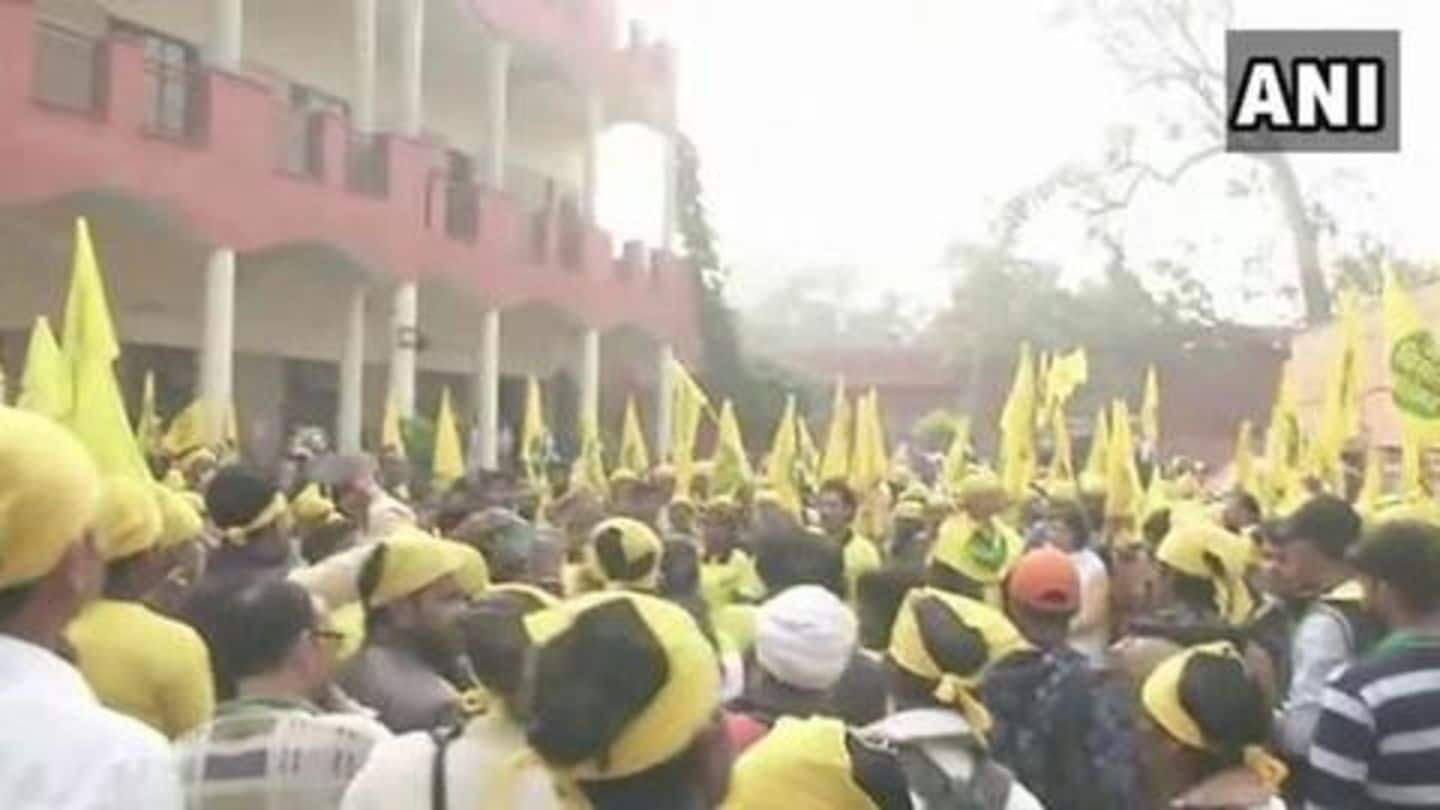
#AgrarianCrisis: Over one lakh farmers march to Delhi in protest
What's the story
Over one lakh farmers are set to gather in Delhi over Thursday and Friday as part of the two-day Kisan Mukti March in a bid to pressurize the Modi government into taking cognizance of the agrarian crisis in the country. Notably, this is the third farmers protest to take place in the national capital in as many months. Here are the details.
Twitter Post
PHOTOS: Farmers marching Ramlila Maidan as part of the protest
Delhi: Farmers who gathered at Bijwasan, on their way to Ramlila Maidan. Farmers have gathered at different locations in the city will march to Ramlila Maidan. They are holding a 2-day protest from today over their demands, including debt relief better MSP for crops pic.twitter.com/pmN38f26cV
— ANI (@ANI) November 29, 2018
Demands
Key demands of the farmers
Demands of the farmers include an unconditional loan waiver, and implementation of the 2006 Swaminathan Commission's recommendations on minimum support price (MSP). Further, on Friday, farmers who have gathered in different parts of Delhi will march to the Parliament to demand a special 21-day joint session for the discussion of two bills - Farmers' Freedom from Indebtedness Bill, 2018, and Farmers' Right to Guaranteed Remunerative Minimum Support Prices for Agricultural Commodities Bill, 2018.
Details
The march is being organized by the AIKSCC
The two-day march is being organized by the All India Kisan Sangharsh Coordination Committee (AIKSCC), a collaborative body of over 200 farmers' organizations. The Kisan Mukti March is the latest in the series of farmers protests that have taken hold of India over the last 18 months, highlighting India's intensifying agricultural crisis. Yet, calls for reforms seem to have fallen on deaf ears.
Crisis
The scale of recent protests highlights the desperation of farmers
While agrarian distress has been a feature of the Indian economy for decades, the scale of the recent protests highlights the desperation of farmers. Owing to factors like small landholdings, low crop prices, and crop loss resultant of erratic weather, farmers across the country have been caught in a vicious circle of debt, so much so, that thousands have committed suicide.
Data
Every day, at least 42 farmers commit suicide
Owing to cyclical debt, between 1995 and 2016, 333,398 farmers across India have committed suicide - a rate of 42 suicides per day. Since 2016, however, data on farmer suicides have been made unavailable.
MSP
The Modi government had misleadingly claimed to have addressed MSP
A key issue is MSP. The 2006 Swaminathan Commission report had, among other things, prescribed a MSP of 1.5 times the cost of cultivating crops. In July this year, the Modi government claimed that it had fulfilled farmers' demand to implement the Swaminathan Commission's recommendations of MSP, saying that MSP had been set at 1.5 times the cost. However, this was a misleading claim.
Caveats
Why the Modi government's claim about MSP was misleading
While the Swaminathan Commission had recommended setting MSP at 1.5 times of C2 (comprehensive cost), the Modi government set MSP at 1.5 times of A2FL costs, which is substantially lower than C2. This is an important caveat. The A2FL formula takes into account actual cost of production plus imputed value of family labor. The C2 formula, on the other hand, takes into account a lot of costs, including imputed rent on land and interest on capital. Thus, there's a marked difference between C2-based MSP, and A2FL-based MSP.
Guarantee
Farmers also want a constitutional guarantee on crop prices
Another reform the farmers are agitating for is a constitutional guarantee that crops will be bought at MSP. This is also significant, considering that market prices for most crops have been less than the MSP set by the government. In fact, as reported by The Wire, market prices for 10 out of 14 kharif crops in October were lower than the MSP.
Another march
Another march is taking place in West Bengal
Meanwhile, in West Bengal, another farmers march is taking place, led by the Left-affiliated All India Kisan Sabha (AIKS). That march, involving over 50,000 farmers, is to protest against state inaction pertaining to returning land to farmers. While the state had promised to return 997 acres of land to farmers, acquired in 2007, only 11 acres have been returned so far, claims the AIKS.
Editor's note
Political authority has been blind to farmers' distress
Considering the scale and frequency of farmers protests taking place across India, the agrarian crisis is a starkly visible one. However, political authority, be it at the state level or the Central level, has largely been blind to farmers' distress, while spending thousands of crores on pursuits like construction of statues. Whether this protest finally spurs apathetic political authority into action remains to be seen.